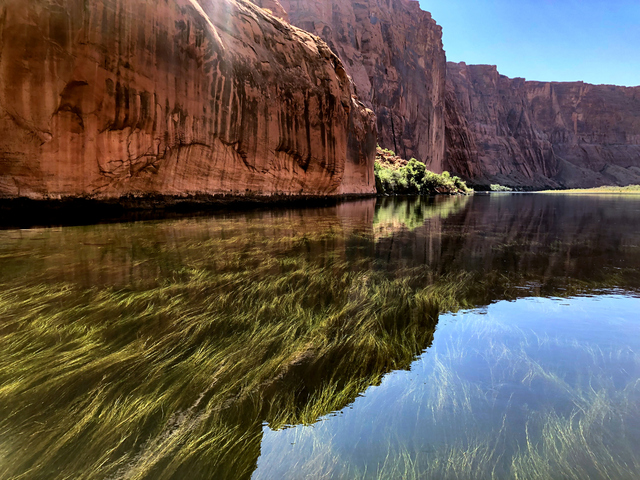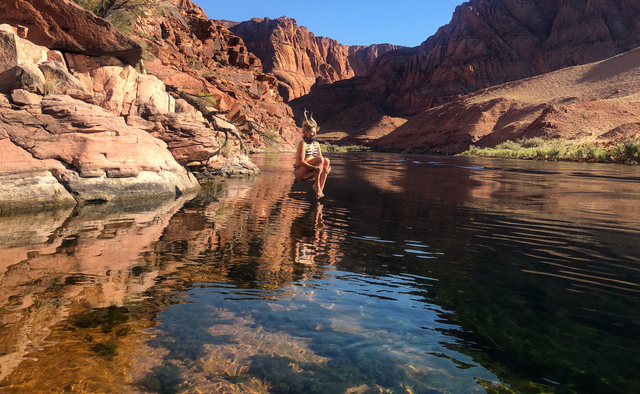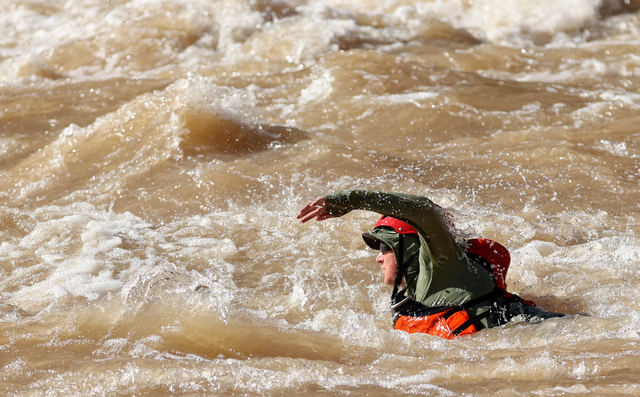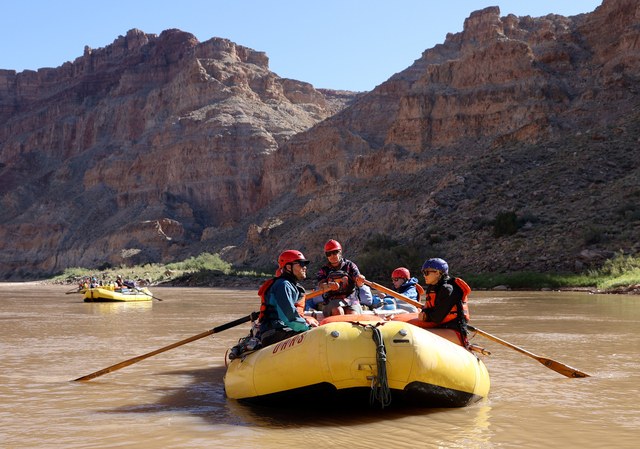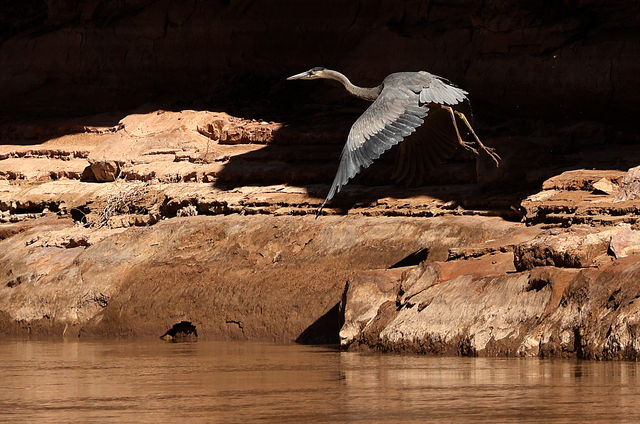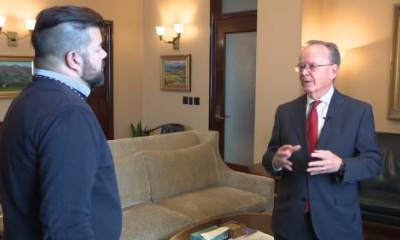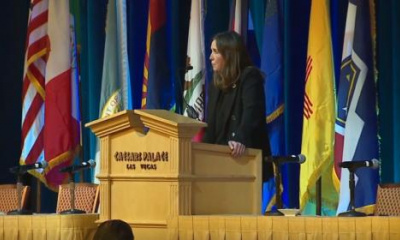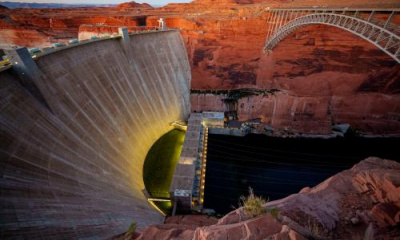'Mudbergs' in Lake Powell and new white water rapids. What is it like to travel down Cataract Canyon on the Colorado River?
The Colorado River Collaborative recently sent two journalists from the Deseret News — reporter Emma Pitts and photographer Kristin Murphy — to raft 97 miles of the Colorado River over six days.
They traveled with river experts, scientists, water rights lawyers, tribal representatives, non-profit representatives, philanthropists and river guides on a trip organized by the nonprofit Returning Rapids. The Moab-based group documents the changes of the river in Cataract Canyon, upper Glen Canyon and along the San Juan River as Lake Powell recedes. Returning Rapids is a project of Glen Canyon Institute, which advocates for eliminating Lake Powell and restoring Glen Canyon.
The Colorado River Collaborative sent the reporters to understand the state of Lake Powell. The status of the recreation area and the river that feeds it is being discussed as seven western states that rely on the Colorado River revise river management plans that will expire in 2026. These guidelines control how much water passes between Lake Powell and Lake Mead, and another part of the guidelines controls how much water is reduced in the basin.
The trip and the stories are part of our mission to educate Utahns about what's happening to the Colorado River and how they may be impacted.
— Colorado River Collaborative Director Heather May
Read:
-
About the growing sediment crisis at Lake Powell in Will Lake Powell become Lake Mud?
-
The custody battle over water between seven states here.
-
What it's like to run the rapids with the 27 people in the world who care for it in The fight to save the Colorado River.
Photos by Kristin Murphy.

Peter Lefebvre, Returning Rapids researcher and OARS river guide, and Travis Custer, Returning Rapids member, motor by a plateau of mud in the Colorado River by Mille Crag Bend, below Cataract Canyon, on Sunday, Sept. 22, 2024. The sediment filled in when this area was submerged under Lake Powell. After the lake receded, mud remains.
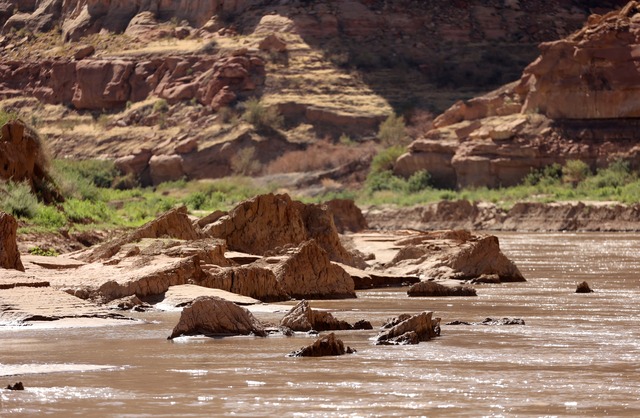
Mud deposits, referred to as mudbergs by Returning Rapids researchers, are pictured in the Colorado River by Mille Crag Bend, between Cataract Canyon and Glen Canyon Dam on Sunday, Sept. 22, 2024. The sediment filled in when this area was submerged under Lake Powell. After the lake receded, mud remains.
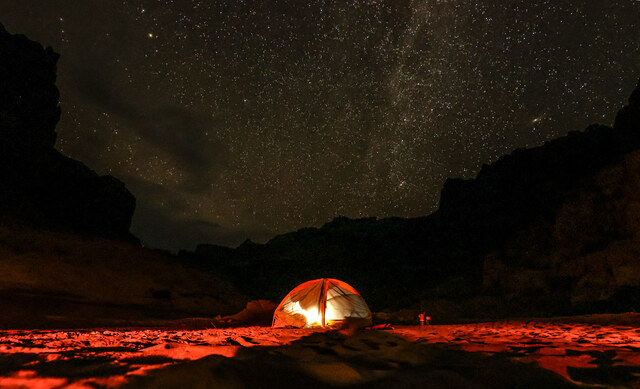
Stars dot the sky above Rockfall Canyon campsite in Cataract Canyon during a six day Colorado River trip with the Returning Rapids Project on Saturday, Sept. 21, 2024.
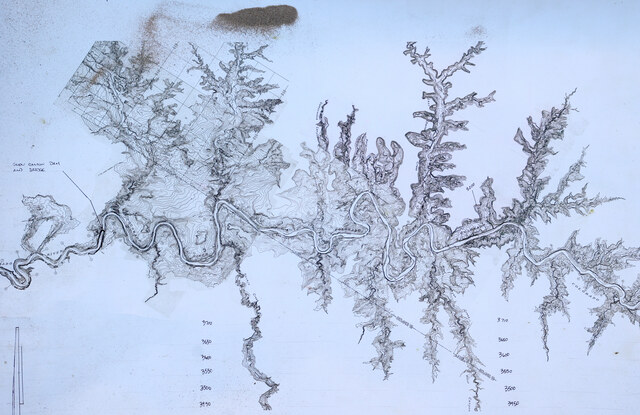
A Returning Rapids Project Colorado River main stem scroll map, made from 1923 USGS topographical data, is rolled out in the sand on a Returning Rapids trip in Cataract Canyon on Friday, Sept. 20, 2024.
Grasses are pictured in the clear water of the Colorado River below Glen Canyon Dam on Sept. 12, 2019. As sediment builds up in muddy rivers and Lake Powell above the dam, the clear downstream river is lacking in the nutrient-dense sediment that can’t get past the dam.
Morgan VerMerris jumps into the clear water of the Colorado River below Glen Canyon Dam, near Lee’s Ferry, on Sept. 13, 2019. As sediment builds up in rivers and reservoir above the dam, the clear downstream river is lacking in the nutrient-dense sediment that can’t get past the dam.
The Colorado River is pictured below Glen Canyon Dam on Sept. 12, 2019. As sediment builds up in rivers and reservoir above the dam, the downstream river is lacking in the nutrient-dense sediment that can’t get past the dam.

A giant wall of sediment, several stories high and known as the Dominy Formation, lines the far river bank and protrudes into the Colorado River, obscuring the view around the river’s bend, at Rockfall Canyon campsite in Cataract Canyon on Saturday, Sept. 21, 2024. The sediment formation is named after Floyd Dominy, commissioner of the U.S. Bureau of Reclamation in 1963, who was responsible for the dam and Lake Powell. When asked about the future effects of sediment on the Colorado River, Floyd replied, “We will let people worry about it in the future.”
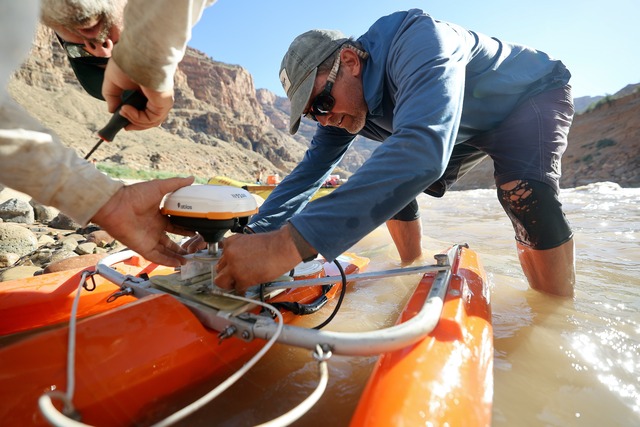
Chris Wilkowske, USGS Water Science Center supervisory hydrologist, and Mike DeHoff, Returning Rapids principal investigator, set up a sonar acoustic doppler current profiler to measure the depth and speed of water currents in the Colorado River just below Gypsum Canyon rapid in Cataract Canyon on Friday, Sept. 20, 2024.
John Berggren, Western Resource Advocates regional policy manager, swims in Gypsum Canyon rapid on a Returning Rapids trip in Cataract Canyon on the Colorado River on Friday, Sept. 20, 2024. The Gypsum Canyon rapid only recently reemerged after being under the flat water of Lake Powell for decades.
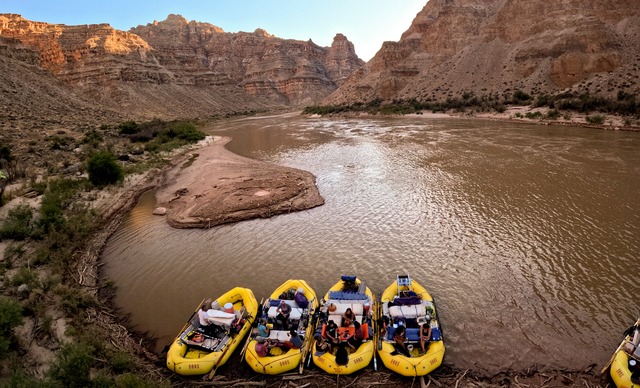
Boaters lounge on rafts near a mudbank at Lower Ten Cent campsite in Cataract Canyon on the Colorado River on Thursday, Sept. 19, 2024.

Peter Lefebvre, Returning Rapids researcher and OARS river guide, navigates Big Drop 3 in Cataract Canyon during a Returning Rapids trip on the Colorado River on Friday, Sept. 20, 2024. On board with him are Cory MacNulty, National Parks Conservation Association southwest region campaign director, Jennifer Pitt, National Audubon Society Colorado River Program director, Jack Schmidt, USU’s Janet Quinney Lawson Colorado River Studies chair and Center for Colorado River Studies director, and Paul Grams, USGS Southwest Biological Science Center research hydrologist.
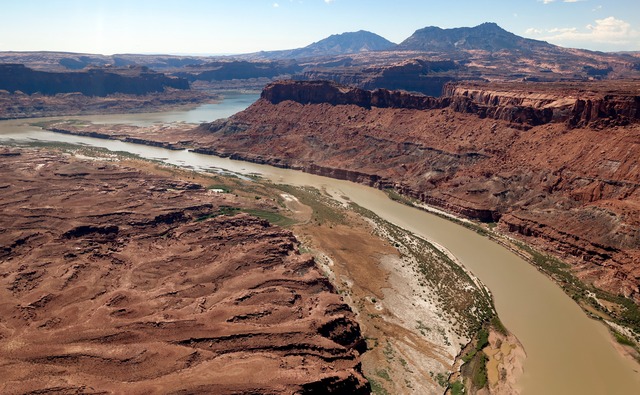
The Colorado River flows into Lake Powell on Sunday, Sept. 22, 2024.

Blue-winged teal ducks take flight over the Colorado River in Narrow Canyon on Sunday, Sept. 22, 2024.
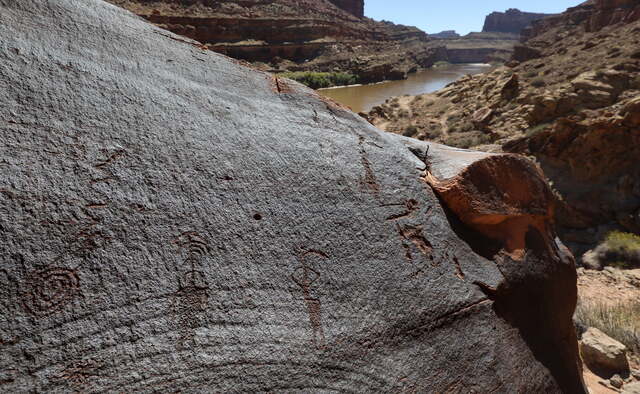
Petroglyphs are pictured by the Colorado River on Wednesday, Sept. 18, 2024.
Deseret News reporter Emma Pitts, right, talks with Luke Runyon, The Water Desk co-director, as Jamie Moulton, OARS river guide, guides the boat on a trip with Returning Rapids in Cataract Canyon on Thursday, Sept. 19, 2024. Anne Castle, U.S. commissioner for the Upper Colorado River Commission, sits in the back.
A blue heron flies over the Colorado River by Mille Crag Bend, below Cataract Canyon, on Sunday, Sept. 22, 2024.
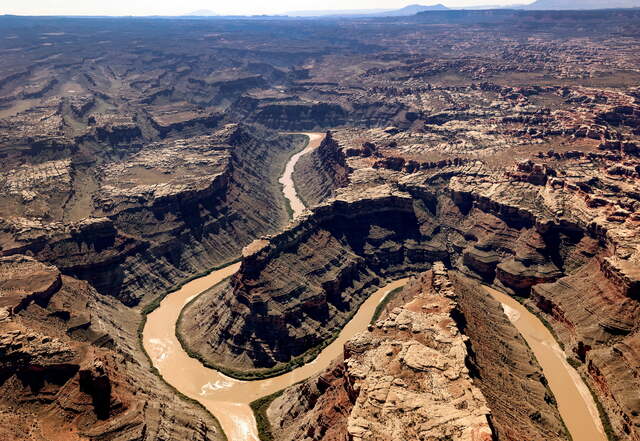
The confluence of the Colorado River and Green River is pictured on Sunday, Sept. 22, 2024.


